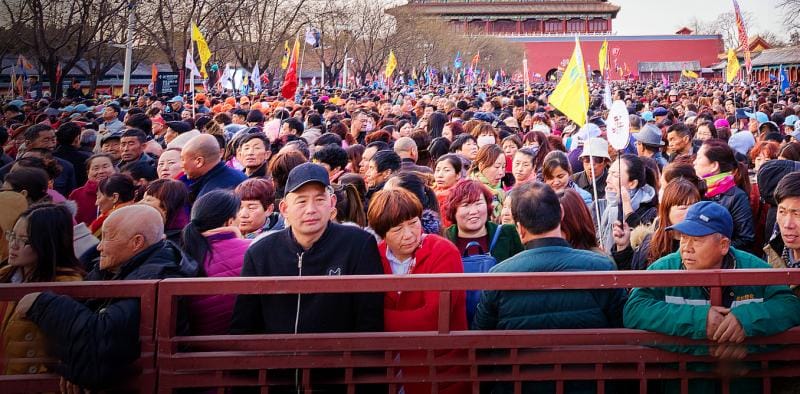
Shannon's excerpt from the article: "Xiujian Peng, The Conversation [excerpt]: #China’s #population has shrunk for the second year in a row.
The National Bureau of Statistics reports just 9.02 million births in 2023 – only half as many as in 2017. Set alongside China’s 11.1 million deaths in 2023, up 500,000 on 2022, it means China’s population shrank 2.08 million in 2023 after falling 850,000 in 2022. That’s a loss of about 3 million in two years.
The two consecutive declines are the first since the great famine of 1959-1961, and the trend is accelerating.
...Deaths climbing as births falling
The death rate is climbing as an inevitable result of the population ageing, and also an upsurge of COVID in the first few months of 2023.
The population is #ageing mainly because the birth rate is falling.
China’s total fertility rate, the average number of births per woman, was fairly flat at about 1.66 between 1991 and 2017 under China’s one-child policy. But it then fell to 1.28 in 2020, to 1.08 in 2022 and is now around 1, which is way below the level of 2.1 generally thought necessary to sustain a population.
By way of comparison, Australia and the United States have fertility rates of 1.6. In 2023 South Korea has the world’s lowest rate, 0.72.
Births plummet despite three-child policy
China abandoned its one-child policy in 2016. In 2021 the country introduced a three-child policy, backed by tax and other incentives.
But births are continuing to fall. In part this is because of an established one-child norm, in part because the one-child policy cut the number of women of child-bearing age, and in part because economic pressures are making parenthood less attractive.
China’s National Bureau of Statistics says employees of enterprises work an average of 49 hours per week, more than nine hours per day. Women graduates earn less than men and are increasingly postponing having children.
...By 2100 we expect every 100 Chinese of traditional working-age to have to support 137 elderly Chinese, up from just 21 at present.
Our central scenario assumes China’s fertility rate will recover, climbing slowly to 1.3. Our low scenario assumes it will decline further to 0.88 over the next decade and then gradually recover to 1.0 by 2050 before holding steady.
We have based our assumptions on observations of actual total fertility rates in China’s region and their downward trend. In 2022 these rates hit 1.26 in Japan, 1.04 in Singapore, 0.87 in Taiwan, 0.8 in Hong Kong and 0.78 in South Korea.
In none of these countries has fertility rebounded, despite government efforts. These trends point to what demographers call the 'low-fertility trap' in which fertility becomes hard to lift once it falls below 1.5 or 1.4."
#news #geopolitics #business

